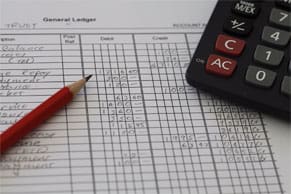Companies of all sizes and industries have assets—items they control that bring current and future benefit to their business. Assets are listed on a company’s balance sheet and their value is generally proportional to a company’s valuation. In other words, the more assets in a business, the higher the business’s total value is likely to be.
Certain assets, called fixed assets, provide value to a company over multiple fiscal years. Commonly called property, plant, and equipment (PPE), their primary function is to support a business’s operations. Fixed assets tend to be substantial—not only in terms of cost and, sometimes, physical size, but also in the ways their accounting treatment brings benefits to a company.
Fixed assets and intangible assets, such as patents, copyrights, and trademarks, are types of noncurrent assets. People sometimes use the phrases “intangible fixed assets” and “tangible fixed assets” to distinguish between the two, but the term “fixed asset” without a modifier typically refers to tangible fixed assets—and that’s how we’ll refer to them in this article.
What Is a Fixed Asset?
Fixed assets are tangible, long-lived assets used by a company in its operations, such as machinery, factories, tools, furniture, and computers. They are listed in the noncurrent asset section on a company’s balance sheet because their useful lives extend beyond one year.
Assets vs. Fixed Assets
Assets are one of seven accounting elements: assets, liabilities, equity, revenue, expense, gains, and losses. “Assets” is the umbrella term for all resources that have value and are controlled by their owner, such as cash, machinery, and patents. There are several classifications of assets, determined by certain characteristics, including their ability to be converted to cash, their use in operations, and their physical existence. Fixed assets constitute the PPE subset of total assets.
Key Takeaways
- Fixed assets are tangible, long-lived resources used to produce products and services.
- Fixed assets tend to be high in value, so more fixed assets help raise a company’s valuation and expand its access to capital.
- Capitalization and depreciation are accounting treatments of fixed assets that bring benefits to a business and are reflected in financial statements and tax returns.
- Accounting for fixed assets is achieved most accurately and efficiently with fixed assets management software.
Fixed Assets Explained
Fixed assets are the machinery, equipment, and tools necessary for a company to make the products intended for sale. Economists often refer to assets as being either capital goods or consumer goods—consumer goods are those sold to customers for their use; capital goods are used to produce the consumer product (or service) to be sold. Fixed assets are considered capital goods, in that they are acquired by a business to generate income from its operations and are not intended for resale to a customer.
Different Asset Classifications
Overall, “assets” is the broad term for all resources controlled by a company, from cash to patents. Given the potential diversity of a company’s assets, several classifications are used to help provide context. Some classifications come from official accounting standards, while others are simply descriptors. Among the formal subsets under the assets umbrella are current assets and fixed assets as well as tangible/intangible assets. For example, inventory and PPE are classified as tangible assets because of their physicality; accounts receivable and patents are classified as intangible assets.
Another way assets are often classified is operating vs. nonoperating. These are descriptors based on how the assets are used, rather than official balance sheet classifications. For instance, an assembly line would be an operating asset; the CEO’s company car would be nonoperating.
Fixed Assets vs. Current Assets
Fixed assets and current assets are two important classifications of assets defined by accounting standards. They are distinguished from each other based on the amount of time it would take to be converted to cash. Current assets include cash and other assets that can be easily converted to cash within a 12-month period. Examples include money market accounts, inventory, securities, and accounts receivable.
Fixed assets are held for more than a year because they have longer useful lives and aren’t expected to be converted to cash sooner. Examples include vehicles, manufacturing equipment, furniture, and buildings. Fixed assets are depreciated over their useful life, unlike current assets, which aren’t depreciated. Fixed assets are reported as PPE on a company’s balance sheet in the noncurrent asset section.
Differences Between Fixed Assets & Current Assets
| Current Assets | Fixed Assets | |
|---|---|---|
| Easily converted to cash | Yes | No |
| Useful life | Less than 12 months | Longer than 12 months |
| Operating assets | Sometimes | Usually |
| Tangible | Sometimes | Yes |
| Depreciable | Not typically | Yes* |
| Examples |
Cash Accounts receivable Inventory Prepaid expenses |
Vehicles Machinery Equipment Land |
| Where disclosed on balance sheet | Under current assets | Under noncurrent assets |
| Potential income statement impact | Varied, i.e., uncollected accounts receivable hit as bad debt expense; old inventory written off as obsolescence expense | Related depreciation expense; or any gain/loss on sale or other disposal |
| Affected statement of cash flow section | Operating activity | Investing activity |
| * except for land |
Why Are Fixed Assets Important?
Fixed assets are important primarily because they help the business do its work and earn revenue. In addition, because of their high value, fixed assets increase a company’s net worth and can also be used as collateral for loans. Let’s take a closer look at fixed assets’ importance.
-
They support the business:
Most companies require fixed assets to generate revenue. Some fixed assets, like machinery or vehicles, are directly deployed to provide products or services, while others support administrative functions. Office furniture and computer hardware are examples of the latter. The addition of fixed assets may enable a company to expand its current level of production.
-
They increase a company’s valuation:
Fixed assets tend to be high value items and, thus, represent a significant part of a company’s overall value. The more fixed assets a company has, the higher its valuation may be to potential investment, merger, and acquisition partners. This is especially true in industries that are asset-intensive, such as manufacturing, where the ratio of fixed assets to total assets is high.
-
Their value can help drive growth:
The value of a company’s fixed assets can be used as collateral to secure loans for new potential opportunities. Access to additional capital, such as a revolving line of credit collateralized by a company’s warehouse, may help a business manage its cash flow.
Benefits of Fixed Assets
Fixed assets are included on a company’s balance sheet, but their benefits don’t stop there. The accounting treatments of fixed assets influence the income statement, statement of cash flows, and tax returns, where the benefits they impart are the result of capitalization—the accounting treatment that records an asset on the balance sheet at acquisition and reduces its value via depreciation over time, rather than expensed all at once. Here’s how fixed assets benefits flow through each type of financial statement.
Balance Sheet
Fixed assets are followed by investors assessing the value of a company and are shown in the noncurrent asset section of the balance sheet, net of the associated accumulated depreciation. This net value reflects an ongoing reduction in value as the fixed asset ages. The balance sheet separates PPE fixed assets from other noncurrent assets because PPE is a line item often analyzed by external investors and partners when valuing a company.
Income Statement
While fixed assets appear as part of the balance sheet, the related depreciation expenses are shown on the company’s income statement. There are several depreciation methods that comply with the Generally Accepted Accounting Principles (GAAP), all aimed at spreading the cost of a capitalized asset over the time in which an asset provided economic benefit. For example, the costs of a $100,000 forklift with an estimated useful life of 10 years would be more fairly represented on the income statement as a $10,000 expense per year of its life, rather than as a single, $100,000 expense in the year of acquisition and $0 in each of the subsequent nine years.
Statement of Cash Flows
A company’s statement of cash flows has two possible ways to reflect fixed-asset treatment benefits. First, the depreciation expense that reduced net income on the income statement is reversed on the statement of cash flows, since it is a noncash expense. Doing this helps maintain focus only on cash expenses, for purposes of analyzing liquidity. Second, all fixed asset activity is contained within the “cash flows from investing activity” section of the statement of cash flows, to separate it from continuing operations. Although fixed assets are fundamental to operations, purchasing and disposing of fixed assets are unique, nonrecurring transactions, so it helps to capture the activity separately from the day-to-day operating activities.
Tax Returns
Fixed assets enjoy special tax benefits in the United States and abroad. Specifically, the US tax code allows companies to reduce their taxable income for depreciation. By doing so, a company can maximize its fixed asset “deduction” by spreading it out over time and allowing it to offset revenue in multiple periods. In fact, the U.S. Internal Revenue Service (IRS) uses accelerated methods of depreciation that achieve the spreading effect over a shorter time than GAAP guidance suggests. For example, a vehicle may depreciate over five years for tax purposes but may have an eight-year useful life for GAAP accounting. It’s important to check with your tax adviser to be aware of all possible benefits available in specific tax jurisdictions.
A key exception to this discussion relates to land. Like other fixed assets, land is capitalized on the balance sheet. However, land does not depreciate and does not affect the income statement, statement of cash flows, or tax returns in the same way as other fixed assets. Land does not qualify for depreciation because it does not decline in value from use, exhaustion, and obsolescence in the same way a piece of machinery might.
Characteristics of Fixed Assets
When determining the proper classification of an asset, several characteristics can set fixed assets apart from other asset types.
Purpose
Companies acquire fixed assets for use in operations that support production of goods or services—they are not acquired for resale or consumption. For example, a construction company would buy a truck for use on job sites, not to resell. Nor are fixed assets incorporated into finished goods, like raw material assets would be. For example, lumber cannot be a fixed asset for the construction company, since it ultimately becomes part of the completed building.
Long Life
By their nature, fixed assets are beneficial for more than one fiscal cycle, often for many years. Because of this, their value is depreciated over the course of the fixed asset’s useful life in accordance with the matching principle of accounting, rather than as a single expense in the period purchased. For example, a warehouse is expected to last for several years and is depreciated over time. Land is a notable exception.
Tangibility
Fixed assets are substantial—they are tangible assets that physically exist. Examples include tools and machinery. By contrast, long-lived intangible assets, such as patents, are noncurrent assets but are not considered fixed assets.
Calculating Fixed Assets
Fixed assets are a significant part of a company’s balance sheet, so understanding how to calculate them is important for financial reporting and analysis. The formula can be used for a single fixed asset or in total. The net book value is used to report fixed assets on the face of a company’s balance sheet. In addition, its historical cost and depreciation components are disclosed in supplementary schedules in the financial statement footnotes. The basic formula for calculating the net book value of a fixed asset is:
Net book value = Cost of asset – Accumulated depreciation
Whereby:
- Cost of asset = The original purchase price plus any costs to bring the asset to its intended use, such as shipping or installation
- Accumulated depreciation = The total amount of depreciation expense recorded for the asset since acquisition
Let’s walk through an example to see how to calculate net fixed assets and how new purchases and depreciation impact the fixed asset balance over time.
Rocky Co., a hypothetical landscaping firm, has the following balances at the beginning of 2025:
- Total cost of all fixed assets: $500,000
- Accumulated depreciation: $150,000
- Monthly depreciation expense: $2,500
Rocky’s net fixed assets on Jan. 1, 2025, are calculated as follows:
Net book value = Cost of assets – Accumulated depreciation
$350,000 = $500,000 – $150,000
During January, Rocky purchased a new truck, with these details:
- Truck cost: $50,000
- Registration and plates: $2,000
- Estimated salvage value: $5,000
- Estimated useful life: 10 years
- Depreciation method: Straight line
The truck is recorded in Rocky’s general ledger at $52,000, representing the purchased price and the registration required to put the truck into use beginning on Feb. 1, 2025.
On Feb. 28, 2025, Rocky’s fixed assets are calculated as follows:
Step 1: Calculate the monthly depreciation for the new truck.
- Total cost of truck = Purchase price + Registration = $50,000 + $2,000 = $52,000
- Depreciable amount = Total cost – Salvage value = $52,000 – $5,000 = $47,000
- Useful life = 10 years = 120 months
Monthly depreciation = Depreciable amount / Useful life in months
$391.67 per month = $47,000 / 120
Step 2: Update the fixed asset balances as of Feb. 28, 2025.
Total cost of all fixed assets = Previous total + New truck cost
$552,000 = $500,000 + $52,000
Accumulated depreciation = Previous balance + (Monthly depreciation × 2 months) + (New truck depreciation x 1 month)
$155,391.67 = $150,000 + ($2,500 × 2) + $391.67
The monthly depreciation expense for the existing assets of $2,500 was applied for both January and February. The new truck’s depreciation was only applied for February, as it was put into use on Feb. 1.
Step 3: Calculate net fixed assets as of Feb. 28, 2025.
Net Fixed Assets = Total cost of all fixed assets – Accumulated depreciation
$396,608.33 = $552,000 – $155,391.67
Therefore, on Feb. 28, 2025, Rocky’s net fixed asset balance is $396,608.33, up from $350,000 on Jan. 1, reflecting the addition of the new truck and the net effect of depreciation.
Accounting for Fixed Assets
Since fixed assets are long-lived, the accounting issues for them change over their lifecycle. Fixed assets are initially capitalized when acquired and then systematically depreciated over the course of their useful lives. While they are in operation, their value is reassessed and adjusted downwardly for any impairment detected by periodic comparison to market value or whenever an unusual circumstance occurs. Ultimately, the accounting processes related to their disposal, retirement, or scrapping reflect these reevaluations, possibly creating a gain or loss on the fixed asset.
Fixed Assets and Financial Statements
At acquisition, fixed assets are recorded on the balance sheet at the price paid plus any additional costs to make it ready for use, such as installation costs. Depreciation expenses hit the income statement each period. A “contra-asset” account on the balance sheet, called accumulated depreciation, is where the periodic depreciation charges accumulate. Netting the accumulated depreciation against the initial capital expenditure provides a running balance of the fixed asset’s book value. This net book value is periodically compared to market value, especially if something significant occurs with the fixed asset, such as a fire. Accountants reduce the book value of fixed assets for impairment, but they do not increase the value unless actual expenditures are made to increase the amount capitalized.
Depreciation of Fixed Assets
Depreciation is the systematic reduction of the value of a capitalized asset over time. Depreciation expense for a given period is a debit that reduces income on a company’s income statement, and the offsetting credit builds up in the accumulated depreciation account on the balance sheet. A critical part of accounting for fixed assets is determining the length of an asset’s useful life, or how long the asset will yield economic benefit. This estimate should be based on some reasonable expectations, such as anticipated usage. Both GAAP and the IRS provide guidance on the length of useful life for distinct types of fixed assets. Another part of accounting for depreciation of fixed assets is estimating whether the asset will have any salvage value when disposed of, which would reduce a fixed asset’s depreciable base. The last step is to select an appropriate depreciation method, such as straight line, units of production, or declining balance. The method selected may differ for financial statement purposes versus tax filings but should be consistent over time.
Disposal of Fixed Assets
Eventually, the fixed asset will be disposed of, whether through sale, damage, obsolescence, or scrapping. Disposal has a direct impact on the financial statements and tax obligations. First, the asset is removed from the balance sheet accounts by crediting the original asset cost and debiting the accumulated depreciation. A second entry is made to record any proceeds received on the balance sheet, such as a debit to increase the cash account. And finally, any gain or loss is reflected on the income statement. The gain or loss calculation is a straightforward calculation: proceeds from disposal less the asset’s book value. A gain is when the net income increases due to the proceeds being more than the book value. If the proceeds are less, the result is a loss on disposal, which reduces net income.
From a tax perspective, gains on disposals may be taxed at the capital gains rate, which can be different than the rate on ordinary income. Losses on disposal may be tax deductible or able to be offset against other gains or income. As a result, it’s important to properly account for fixed asset disposals and time them strategically when possible.
Fixed Asset Turnover Ratio
The fixed asset turnover ratio is a financial metric that measures how efficiently a company uses its fixed assets to generate sales. The formula is:
Fixed asset turnover ratio = Net sales / Average net fixed assets
Whereby:
- Net sales are the total revenue minus any returns, allowances, and discounts, over a particular period.
- Average net fixed assets take the mean of the beginning and ending balances for the same period as the net sales used in the numerator. This formula is:
Average net fixed assets = (Beginning net fixed assets + Ending net fixed assets) / 2
In general, a higher ratio indicates that the company is using its fixed assets more efficiently to generate sales. On the other hand, a low ratio might suggest underutilization of equipment or facilities. However, it’s important to consider the nature of a company’s particular industry when analyzing this ratio, as fixed asset-heavy sectors, like manufacturing, will have different ratios than less-capital intensive industries, such as professional services. The ratio is most useful when compared to industry averages or direct competitors, or to itself over time. A declining ratio might indicate overinvestment in fixed assets relative to sales growth, potentially signaling the need for better capacity utilization or divestment of underperforming assets.
Other factors to keep in mind when interpreting the fixed asset turnover ratio include:
- A very high ratio isn’t always positive as it could indicate that a company is underinvesting in fixed assets, weakening its capacity or limiting long-term growth.
- Older, depreciated assets will result in a lower denominator yielding a higher ratio, but may not function as efficiently or innovatively as newer assets.
- Seasonal fluctuations in sales can impact the ratio, so using average sales for a period might provide a more accurate picture when looking at partial years.
- Companies that lease rather than own fixed assets might appear to have a higher ratio.
For example, the fixed asset turnover ratio for our fictional landscaping business is calculated as follows (using the assumption that net sales for January and February 2025 were $100,000):
Fixed asset turnover ratio = Net sales / Average net fixed assets
.27 = $100,000 / [($350,000 + $396,608.33) / 2]
This means that for every dollar invested in fixed assets, the company generated $0.27 in sales in this two month period. The ratio would be higher if using a full year of sales data.
Taxation of Fixed Assets
The tax issues around fixed assets influence everything from cash flow to strategic investment decisions. Given the complexity and fluidity of tax laws, it’s a best practice for businesses to work closely with tax professionals for compliance and to optimize the tax treatment of their fixed assets.
One of the first considerations is whether to capitalize or expense a purchase. Capitalization means that the cost of the asset is spread out over time through depreciation. Some assets, usually low value items, may be expensed immediately, offering an immediate reduction in taxable income.
Depreciation itself is central to the tax treatment. The IRS permits several depreciation methods, such as straight-line, declining balance, and the sum-of-the-years’-digits method, with most assets falling under the Modified Accelerated Cost Recovery System. The different methods yield different depreciation expenses by year, although eventually add up to be the same amount. Businesses can also benefit from special accelerated deductions, like Section 179 and bonus depreciation, which allow for significant upfront write-offs of qualifying assets, subject to certain limits and eligibility criteria.
Other key tax considerations for US companies include the distinction between repairs and improvements, because repairs are typically deductible right away, but improvements are capitalized and depreciated. Additionally, disposing of assets can trigger capital gains or losses and depreciation recapture. Further, special rules apply to vehicles, real estate, and some energy-efficient equipment, which may even qualify for tax credits.
Examples of Fixed Assets
Fixed assets come in many forms. They are usually inventoried individually but grouped as follows in the fixed asset accounts in a company’s general ledger.
-
Land:
Land used for business operations is a fixed asset. Land held for speculation or resale (as by a real estate company) is not a fixed asset.
-
Buildings and factories:
Offices, warehouses, factories, workshops, and garages are among the fixed assets in this category.
-
Furniture and Fixtures:
Office equipment, desks, and tables are considered fixed assets, as are fixtures such as sinks, cubicle walls, or rugs (that is, any built-in item that cannot be removed without damage to the asset).
-
Leasehold Improvements:
Additions and upgrades to leased or rental property—think retail shelving, paint, erection of office walls, carpentry, electrical, and plumbing upgrades—are fixed assets.
-
Computer hardware, software, and office equipment:
Computer hardware is a fixed asset, including tablets, PCs, and servers. Purchased software, such as enterprise packages and cloud-based applications, are also considered fixed assets. Office equipment like copiers and telephones are included, too.
-
Vehicles:
Cars, trucks, tractors, and forklifts are examples of fixed asset vehicles.
-
Machinery and Equipment:
Heavy-duty machinery—including assembly lines, cranes, and equipment such as X-ray machines, lawn mowers, and pizza ovens—is considered a fixed asset.
-
Tools:
Typically, low-price tools may be expensed, but higher-value items that last more than a year are included in fixed assets. Companies typically set a “materiality threshold“ for including tools in fixed assets.
Increase Efficiency and Accuracy With NetSuite Fixed Assets Management
Fixed assets are expensive but important assets for most businesses—they help keep the business running. But fixed assets have various specific accounting requirements as well. Fixed asset management software, such as NetSuite Fixed Assets Management, eliminates the hassle of managing fixed assets using manual spreadsheets. Having a complete, automated inventory of every fixed asset, large or small, and linking it with its historical cost and depreciation schedule helps physically safeguard those assets and streamline accounting for them. And since your assets are likely not located all in one place, the cloud-based accessibility offered by NetSuite Fixed Assets Management can help your operations and accounting staff manage all those fixed assets more accurately and efficiently.
Fixed assets are tangible, valuable assets that are critical for business operations. They help a company produce its products or services in order to make money. Because they are capitalized and depreciated over time, they carry particular financial statement and tax benefits. Since external parties analyze fixed assets when valuing a company or extending collateralized loans, safeguarding those fixed assets and exercising correct accounting procedures are important steps, and can more accurately and efficiently be accomplished with solid fixed-asset management software.
Fixed Asset FAQs
What are examples of fixed assets?
Examples of fixed assets include land, buildings, heavy machinery, vehicles, and IT equipment. They are tangible assets that provide operational benefit for longer than one year.
What are the three types of assets?
Assets can be thought of in terms of their convertibility to cash, whether they are tangible or intangible, and whether they are operating or non-operating. Fixed assets are tangible, operating assets not easily convertible to cash.
What is a fixed asset and its types?
Fixed assets are tangible, long-lived assets used by a company in its operations, such as machinery, factories, tools, furniture, and computers. They are noncurrent assets because they have useful lives that extend beyond one year.









